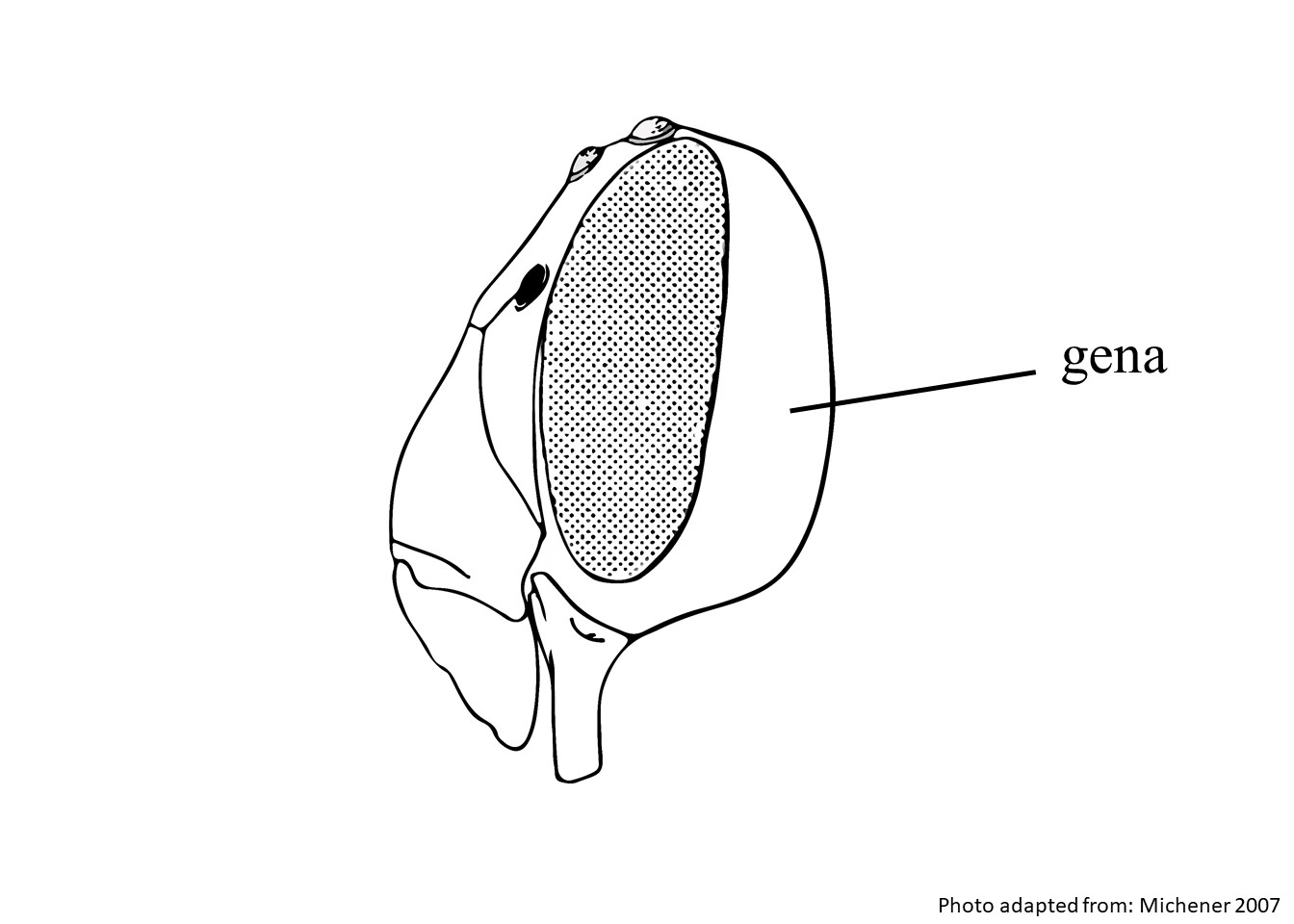Family: Megachilidae
Subfamily: Megachilinae
Tribe: Osmiini
Genus: Osmia Panzer, 1806
Subgenus: O. (Osmia) Panzer, 1806
Species: Osmia cyrenaica Peters, 1978
Common name: none
Osmia (Osmia) cyrenaica is a largely unknown species, known only from the male holotypeholotype:
the type specimen used to describe a species
. O. cyrenaica are black bees with a copper gloss to the abdomen. The head has blackish hair, and the thorax and abdomen have rusty yellow to red hairs. Male body length is between 11–14 mm (Peters 1978Peters 1978:
Peters, D.S. 1978. Systematik und Zoogeographie der west-palauml;arktischen Arten von Osmia Panzer, 1806 s. str., Monosmia Tkalcu, 1974 und Orientosmia n. subgen. (Insecta: Hymenoptera: Megachilidae). Senckenbergiana Biologica (Frankfurt) 58: 287ndash;346.). O. cyrenaica is named after the Libyan coastal town Cyrenaica where specimens used to describe the species were collected (Peters 1978Peters 1978:
Peters, D.S. 1978. Systematik und Zoogeographie der west-palauml;arktischen Arten von Osmia Panzer, 1806 s. str., Monosmia Tkalcu, 1974 und Orientosmia n. subgen. (Insecta: Hymenoptera: Megachilidae). Senckenbergiana Biologica (Frankfurt) 58: 287ndash;346.).
(from Peters 1978Peters 1978:
Peters, D.S. 1978. Systematik und Zoogeographie der west-palauml;arktischen Arten von Osmia Panzer, 1806 s. str., Monosmia Tkalcu, 1974 und Orientosmia n. subgen. (Insecta: Hymenoptera: Megachilidae). Senckenbergiana Biologica (Frankfurt) 58: 287ndash;346.)
 half as long or smaller than width of eye.
half as long or smaller than width of eye.Osmia cyrenaica are similar to O. rufa in size, hair coloration, antennal length, and width of the genagena:
the cheek or side of the head . These species can be distinguished by each other by the shape of the penis valves, which often require dissection to view. O. cyrenaica has penis valves that are sharply pointed apicallyapically:
. These species can be distinguished by each other by the shape of the penis valves, which often require dissection to view. O. cyrenaica has penis valves that are sharply pointed apicallyapically:
near or at the apex or end of any structure
, and O. rufa has penis valves that are relatively rounded (Peters 1978Peters 1978:
Peters, D.S. 1978. Systematik und Zoogeographie der west-palauml;arktischen Arten von Osmia Panzer, 1806 s. str., Monosmia Tkalcu, 1974 und Orientosmia n. subgen. (Insecta: Hymenoptera: Megachilidae). Senckenbergiana Biologica (Frankfurt) 58: 287ndash;346.).
Osmia cyrenaica flight time is unknown since this species is rarely collected. The specimen described by Peters (1978) was collected near the end of March.
unknown
unknown
Osmia cyrenaica is found in Libya (Peters 1978Peters 1978:
Peters, D.S. 1978. Systematik und Zoogeographie der west-palauml;arktischen Arten von Osmia Panzer, 1806 s. str., Monosmia Tkalcu, 1974 und Orientosmia n. subgen. (Insecta: Hymenoptera: Megachilidae). Senckenbergiana Biologica (Frankfurt) 58: 287ndash;346.).
Distribution map generated by Discover Life -- click on map for details, credits, and terms of use.
Peters, D.S. 1978. Systematik und Zoogeographie der west-paläarktischen Arten von Osmia Panzer, 1806 s. str., Monosmia Tkalcu, 1974 und Orientosmia n. subgen. (Insecta: Hymenoptera: Megachilidae). Senckenbergiana Biologica (Frankfurt), 58: 287-346.